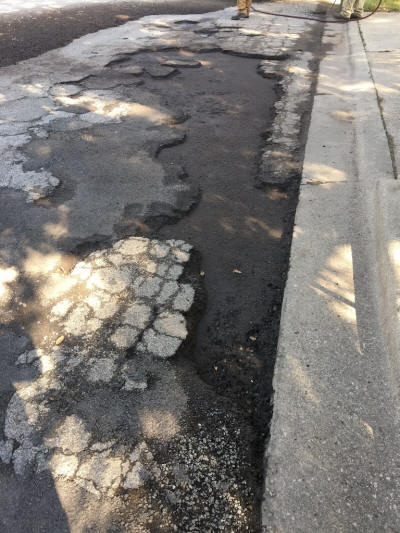|
[October 15, 2016]
 Send a link to a friend
Send a link to a friend
 Late
last week, LDN came across a city of Lincoln street department crew
patching a large washed out area along a curbside, using the Vortex
Total Patch machine. Late
last week, LDN came across a city of Lincoln street department crew
patching a large washed out area along a curbside, using the Vortex
Total Patch machine.
Earlier this year, street department superintendent Walt Landers
presented a request to the city council seeking to lease this
machine, which was marketed as a one-stop process for making road
repairs that would last longer than the standard hot or cold patch.
Landers had seen a demonstration of the machine and noted that it
was a tool that would give the city the ability to do a more
proficient job on road repairs.
The machine has the capability to thoroughly clean the area to be
patched. Then a process involving mixing a thick, hot oil product is
mixed in layers with rock as the holes are filled.
It takes only two people to
accurately run the machine. As seen in the photos below, one person
works to blend the oil and gravel, while the second person monitors
for distance to assure the patch is going in level with the existing
roadway, and correct to pitch for water drainage.
The process involved working in layers, building up the content of
the hole until it is level and smooth with the rest of the road.
When the patch has had time to cure, excess gravel is swept away by
the city.
The end result is that the patch is smooth and true to the road,
unlike tar patches that generally end up a bit higher than the rest
of the street, and differ in color, making the road look like a
patchwork quilt at best.
Generally speaking, about the only way to tell the patched area from
the original road will be the color of the gravel, which is slightly
lighter than the rest of the road.
This past Tuesday evening, Landers shared a picture of how this same
area looked prior to the patch work. He said that he is very pleased
with the performance of the machine, and that it is living up to
expectations.
Using this type of patching method is a little more costly than
scooping shovels full of hot or cold patch, but the life expectancy
of the new patching method does make up the difference.
By Nila Smith |